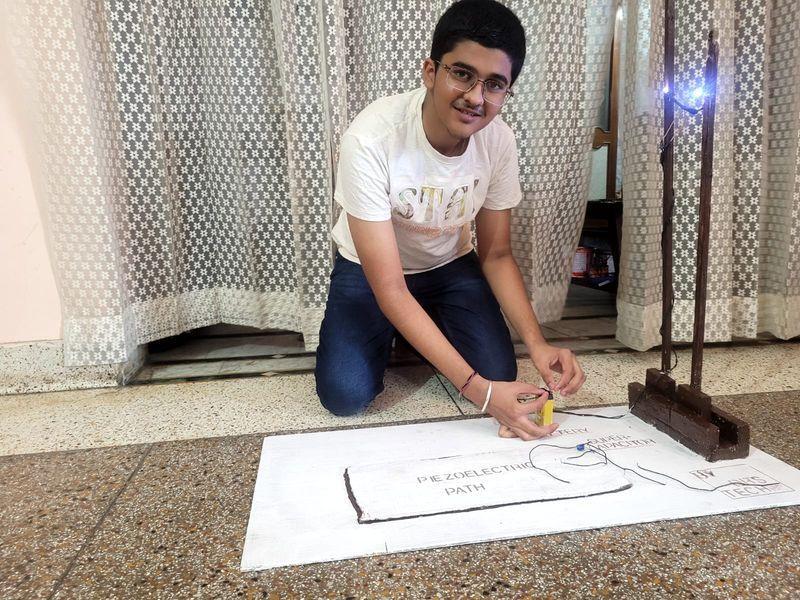
Hoshiarpur Student Builds Device to Generate Power from Footsteps
In a remarkable display of innovation and ingenuity, a Class 8 student from Hoshiarpur, Punjab, has developed a groundbreaking project that could revolutionize the way we think about power generation. Sanchit, the 14-year-old student, has created a device that harnesses energy from a simple and ubiquitous source – human footsteps. Using piezoelectric technology, his project, “Power beneath our feet,” converts the kinetic energy generated by walking into electricity.
Sanchit’s remarkable achievement has caught the attention of local officers, scientists, and enthusiasts alike. His device is designed to be compact and portable, making it an ideal solution for powering small devices, such as smartphones, lamps, or even entire villages in areas where access to electricity is limited.
The concept behind Sanchit’s project is surprisingly simple. Piezoelectric materials, such as crystals or ceramics, generate an electric charge when subjected to mechanical stress, such as pressure or vibration. By placing these materials underfoot, the pressure and movement generated by walking can be converted into electrical energy. This technology has been used in various applications, including sensors, actuators, and even some medical devices.
Sanchit’s device consists of a series of piezoelectric sensors placed along a flat surface, which are connected to a small generator. As a person walks over the surface, the sensors detect the pressure and movement, generating an electric charge that is then converted into usable electricity. The device is designed to be compact and lightweight, making it easy to carry and deploy in a variety of settings.
The potential applications of Sanchit’s technology are vast and varied. In areas where access to electricity is limited, such as rural villages or disaster-stricken regions, this device could provide a reliable and sustainable source of power. Additionally, the technology could be used in urban areas to power small devices, reducing the need for traditional power sources and promoting a more sustainable and environmentally friendly approach to energy generation.
Sanchit’s project has not gone unnoticed. Local officials and scientists have been impressed by his innovative thinking and technical skill. “This is a remarkable achievement by a young student,” said Dr. Jagtar Singh, a local scientist. “The potential of this technology is vast, and I have no doubt that Sanchit’s invention will have a significant impact on the way we think about power generation in the future.”
Sanchit’s journey to develop his device began when he was just 12 years old. Inspired by a science project at school, he began researching piezoelectric technology and its applications. With the guidance of his teachers and mentors, he spent several months designing and testing his device, overcoming numerous challenges and setbacks along the way.
Despite his young age, Sanchit’s achievement is a testament to the power of innovation and determination. His project is a shining example of how young minds can make a significant impact on the world, and it serves as a reminder that the next generation of scientists and engineers is ready to tackle the complex challenges of the 21st century.
As Sanchit continues to refine his device and explore its potential applications, it is clear that his invention has the potential to transform the way we think about power generation. Whether it is used to power small devices, entire villages, or even cities, Sanchit’s device is a reminder that innovation and creativity can come from anywhere, and that the next big breakthrough may be just a step away.






